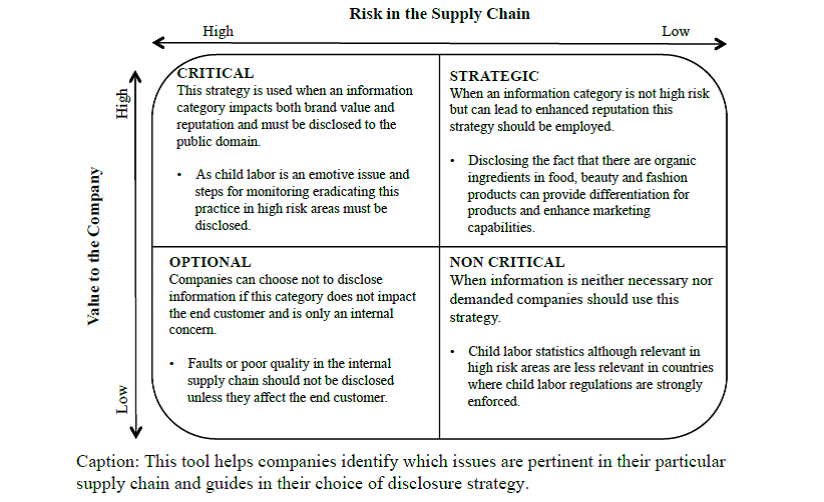8 steps for best practice in your supply chain
Many organizations now operate highly complex and globalized supply chains. While these supply chains are required to be lean, agile and sustainable, they are also the focus of growing attention from a variety of external stakeholders and increasingly subject to regulation. For these reasons it is important for companies to consider their supply chain information disclosure strategy.
Companies such as Nike, Apple and Coca-Cola are taking the lead in supply chain transparency, using tools such as real-time monitoring, product coding and serialization to provide guidance and assistance to their suppliers to help them attain high levels of transparency. If a company can commit to transparency in supply chain disclosure, this can become a capability or competence. For example, Nike was tainted in the 1990s for reports about worker abuse, sweatshop labor and poor working conditions, but has since become known for responsible supply chain disclosure, cited as a company that ‘turned full disclosure into a badge of honor.’
Types of supply chain information commonly publicly disclosed include supply chain membership i.e. names of first tier and lower tier suppliers, provenance and environmental and social information. For example, Intel took the lead as the first electronics brand to offer microprocessors made with materials from smelters validated as conflict free.
The information disclosure matrix (below) can help managers to map their disclosure practices for specific categories of supply chain information. It outlines when it is critical to disclose information, when information should be strategically disclosed to differentiate a company or product, when decisions are made not to disclose irrelevant or inappropriate information, or when disclosure is non-critical. Managers should map stakeholder needs to identify material supply chain issues for disclosure.
Finally, companies can take a number of steps to ensure a viable and high-quality supply chain transparency strategy:
- Analyze the pressures for increased supply chain transparency.
- Assess current capabilities and resource base.
- Identify current levels and quality of critical information in your supply chain
- Clarify strategic thinking around the current and desired extent of supply chain information disclosure you wish to follow.
- Decide on type and level of information disclosure.
- Ensure strategic alignment between supply chain information and company strategy
- Build collaborative relationships.
- Be proactive: Anticipate future demands
On the topic of supply chain transparency, BITCI is running a training workshop on November 20 and 21 on How to Conduct Due Diligence in Human Rights. This training is being organised further to the legislation in Ireland on Non-Financial Reporting (July 2017) . The new legislation pertains to 2018 annual reports (featuring 2017 data) and is relevant to public-interest entities, banks and insurance companies, who from next year will have to disclose information that will include the organisation’s environmental impact, diversity in the board of directors, anti-corruption and bribery, and respect for human rights. Find out more.
Adapted from Marshall, D., McCarthy, L., McGrath, P., & Harrigan, F. (2016). What’s Your Strategy for Supply Chain Disclosure? MIT Sloan Management Review, 57(2), 37.
Business in the Community members have access to thought leadership in responsible business thanks to our partnership with the Centre for Business and Society (CeBaS) at the Michael Smurfit Graduate Business School, UCD.



